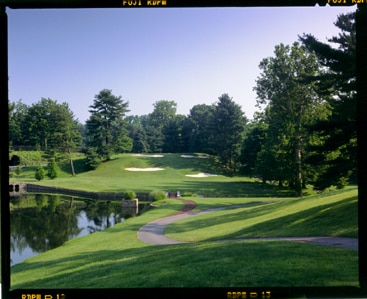
Greens Committee chairman Walter Harban couldn’t have been happier: After a dogged four-year effort, the putting surfaces at his beloved Columbia Country Club were in top shape for the 1921 U.S. Open. The legendary Harry Vardon and the reigning U.S. Open champion, Ted Ray, had toured Columbia, located in Chevy Chase, Maryland, the previous year and had pronounced it “one of the very best in America.”
Then, two weeks before the start of the Open, disaster struck in the form of a killer drought. By the time of the championship, four years of hard work had essentially been destroyed. A desperate membership was said to have spread coal dust over the greens. Nearly every player decried what terrible impact the burned-out greens would have on the competition.
One who didn’t was Jim Barnes, whose strategy was to make sure of a two-putt, rather than running aggressive approach putts past the hole. While his fellow competitors three-putted their way out of contention, Barnes won by nine strokes. President Warren Harding presented the trophy to Barnes, and the unfortunate tragedy that had befallen the greens was swept away by relief that a worthy champion had been crowned.
More than 80 years later, Columbia Country Club, established in 1898, remains one of the truly venerable clubs in the United States. The greens have long since been fully restored, and today are some of the smoothest, most velvety poa annua surfaces in existence on the East Coast.
While the famous 100-yard-long cross bunker at the 5th hole has been removed, little else has been changed since. William Flynn tinkered a bit in the ’30s, George and Tom Fazio touched it up a bit in the modern era, and the team of Brian Ault and Thomas Clark restored the bunkering in 2000.
While there are only two par 5s, there is a run of par 4s beginning at the 9th where length certainly matters. They range between 430 and 442 yards, and together with the 455-yard 6th and the 433-yard finishing hole, this collection of two-shotters provides all the challenges of a much longer track.
Par: 70
Yardage: 6,586
Year founded: 1898
Architects: Herbert Barker, Walter J. Travis






